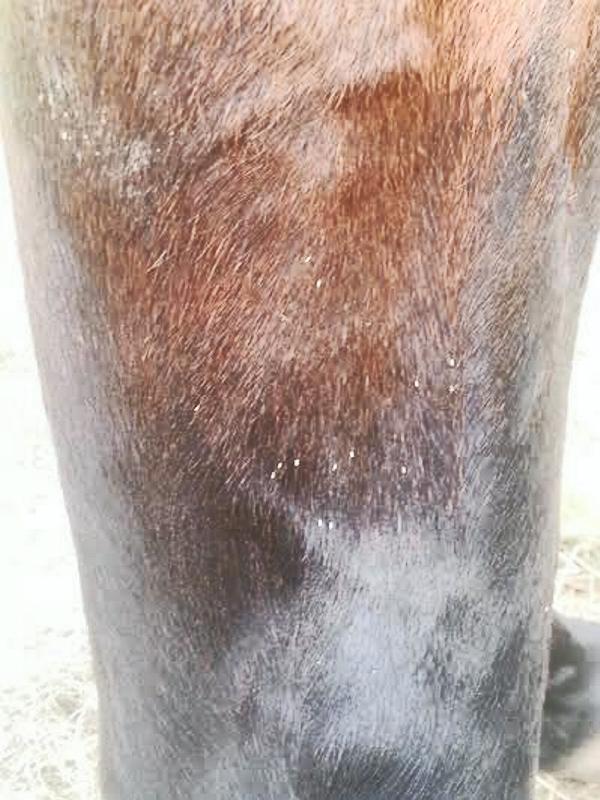Veterinary surgeon
Liz O’Flynn explains what bots are and how they affect horses
Part 1: Bots
What are Bots?
Bots are very common parasites in horses all over the world. They are the immature form (larvae) of the adult flies named Gasterophilus Intestinalis. The adult flies are not parasitic and cannot feed. They only exist long enough to mate and lay eggs and they die as soon as their nutrients remaining from the larval stage are used, usually in approximately two weeks.The bot larvae are found attached to the inside of the stomach wall of affected horses.Are bots a serious problem in horses in Ireland?
Bots would not be considered as a significant problem in horses in Ireland. But due to what appears to have been a recent increased incidence of bot eggs on horses, many queries and requests have been received from concerned horse owners for further information on the subject.Are bot flies easily identified?
A bot fly resembles a bumble bee or honey bee in appearance. Some years ago the warble fly was commonly seen in Ireland and was easily mistaken for the bot fly. It often caused the problem of warbles on horse’s backs, in the saddle area. It also caused rejection of thousands of cattle hides post slaughter, due to the damage caused by warbles burrowing through the cattle’s skin. Fortunately the warble fly has now been eradicated in Ireland. But its comrade the bot fly lives on.How do bot eggs appear on horses’ legs?
The adult bot fly (Gasterophilus) lays its eggs on the horse’s forelimbs and shoulders, in late summer and autumn. Less commonly the eggs may be seen on the abdomen and other areas of the upper body.The bot eggs are little yellow eggs and are unsightly, particularly if they appear on dark-coloured show horses.How are bot eggs transferred from the horses legs into the horse’s body system?
These small eggs (1-2 mm) which can be seen fairly easily with the naked eye are transferred from their location on the horse’s legs (or less commonly the body), where they are glued to the horse’s hairs. The larvae hatch in approximately one week when stimulated, usually by affect of the horse’s licking. The larvae remain embedded in the tongue or the mucosa of the mouth for several weeks, where they can cause mouth ulcers. Following this stage, the emerging larvae then pass to the stomach where they attach themselves to the stomach wall. This does not appear to cause any major problems for the horse though there would be discomfort during certain stages. For example when the infected horse is eating, particularly while the larvae are embedding in the mouth area.After development in the stomach for approximately 8–10 months, they pass out in the faeces and develop into maggot-like pupae, remaining in the soil for three–five weeks, after which the adult bot fly emerges. The bot life cycle begins again.Do bots cause health problems in horses?
The developing bot larvae may cause transient mouth ulcers. Occasionally, circular ulcers which have raised margins, can be seen on the inside of the cheeks and lips. The ulcers are usually transient, but they can cause excessive salivation. However bots do not usually cause major health problems in horses but they have been associated in some cases of a mild gastritis and other gastric problems, stomach ulcers, poor body condition, low grade colic.They can leave small erosions (mild ulcers) where they attach to the wall of the stomach, but there is very little evidence that these have any serious effect on the horse’s health. Uncommonly, very large numbers of bots larvae may be present, but even with these severe infestations, the horse rarely shows signs of illness. Theoretically, a very heavy burden of bots could cause weight loss, ill-thrift, and interference with normal stomach emptying, but these signs are very rare, if they occur at all.Basically the main damaging effect is caused by the larvae, when they attach by oral hooks to the lining of the stomach. This can then cause the erosions and ulcerations at the site of attachment and a hyperplastic reaction around it.Also the buzzing sound made by the adult flies when they lay their eggs on the horse’s legs etc, may alarm or annoy horses causing them to over-gallop or bolt in the field and increase injury risks.As long as there is a good worm control programme in place, there should not be a bot problem in horses. 